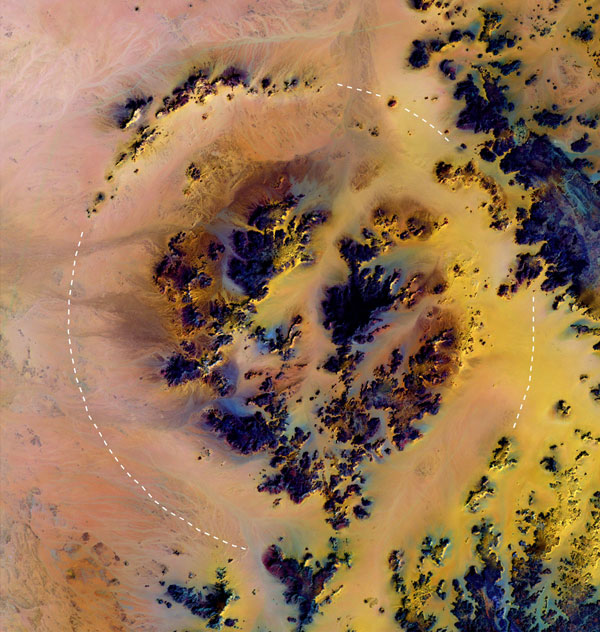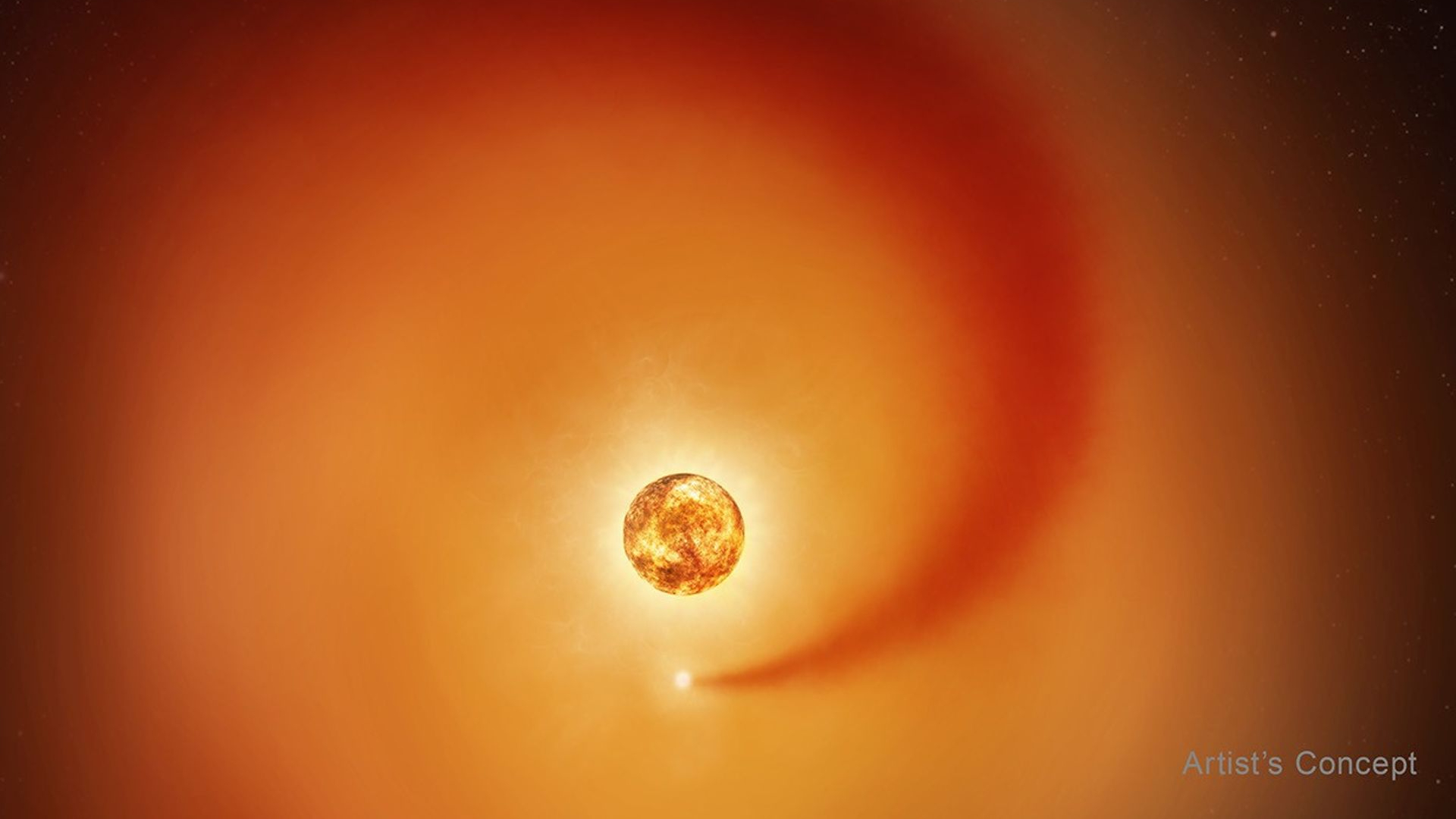Huge Crater Found in Egypt

Scientists have discovered a huge crater in the Saharan desert, the largest one ever found there.
The crater is about 19 miles (31 kilometers) wide, more than twice as big as the next largest Saharan crater known. It utterly dwarfs Meteor Crater in Arizona, which is about three-fourths of a mile (1.2 kilometers) in diameter.
In fact, the newfound crater, in Egypt, was likely carved by a space rock that was itself roughly 0.75 miles wide in an event that would have been quite a shock, destroying everything for hundreds of miles. For comparison, the Chicxulub crater left by a dinosaur-killing asteroid 65 million years ago is estimated to be 100 to 150 miles (160 to 240 kilometers) wide.
The crater was discovered in satellite images by Boston University researchers Farouk El-Baz and Eman Ghoneim.
El-Baz named the crater "Kebira," which means "large" in Arabic and also relates to its location on the northern tip of the Gilf Kebir region in southwestern Egypt.
"Kebira may have escaped recognition because it is so large," equal to the "expanse of the Cairo urban region from its airport in the northeast to the Pyramids of Giza in the southwest," El-Baz said today. "Also, the search for craters typically concentrates on small features, especially those that can be identified on the ground. The advantage of a view from space is that it allows us to see regional patterns and the big picture."
The crater has two rings, a common configuration. Over time, it has been eroded by wind and water to make it unrecognizable to the untrained eye.
Breaking space news, the latest updates on rocket launches, skywatching events and more!
"The courses of two ancient rivers run through it from the east and west," Ghoneim said.
The timing of the impact has not been determined.
The impact that carved Kebira might have created an extensive field of yellow-green silica fragments, known as desert glass and found on the surface between the giant dunes of the Great Sand Sea in southwestern Egypt, the researchers said.
The Kebira Crater straddles the border between Egypt and Libya, and is centered at the following coordinates: 24.5 N, 25 E.
- Mystery of Arizona's Meteor Crater Solved
- Catastrophe Calculator: Estimate Asteroid Impact Effects Online
- Ancient Impact Turned Part of Earth Inside-Out

Rob has been producing internet content since the mid-1990s. He was a writer, editor and Director of Site Operations at Space.com starting in 1999. He served as Managing Editor of LiveScience since its launch in 2004. He then oversaw news operations for the Space.com's then-parent company TechMediaNetwork's growing suite of technology, science and business news sites. Prior to joining the company, Rob was an editor at The Star-Ledger in New Jersey. He has a journalism degree from Humboldt State University in California, is an author and also writes for Medium.
